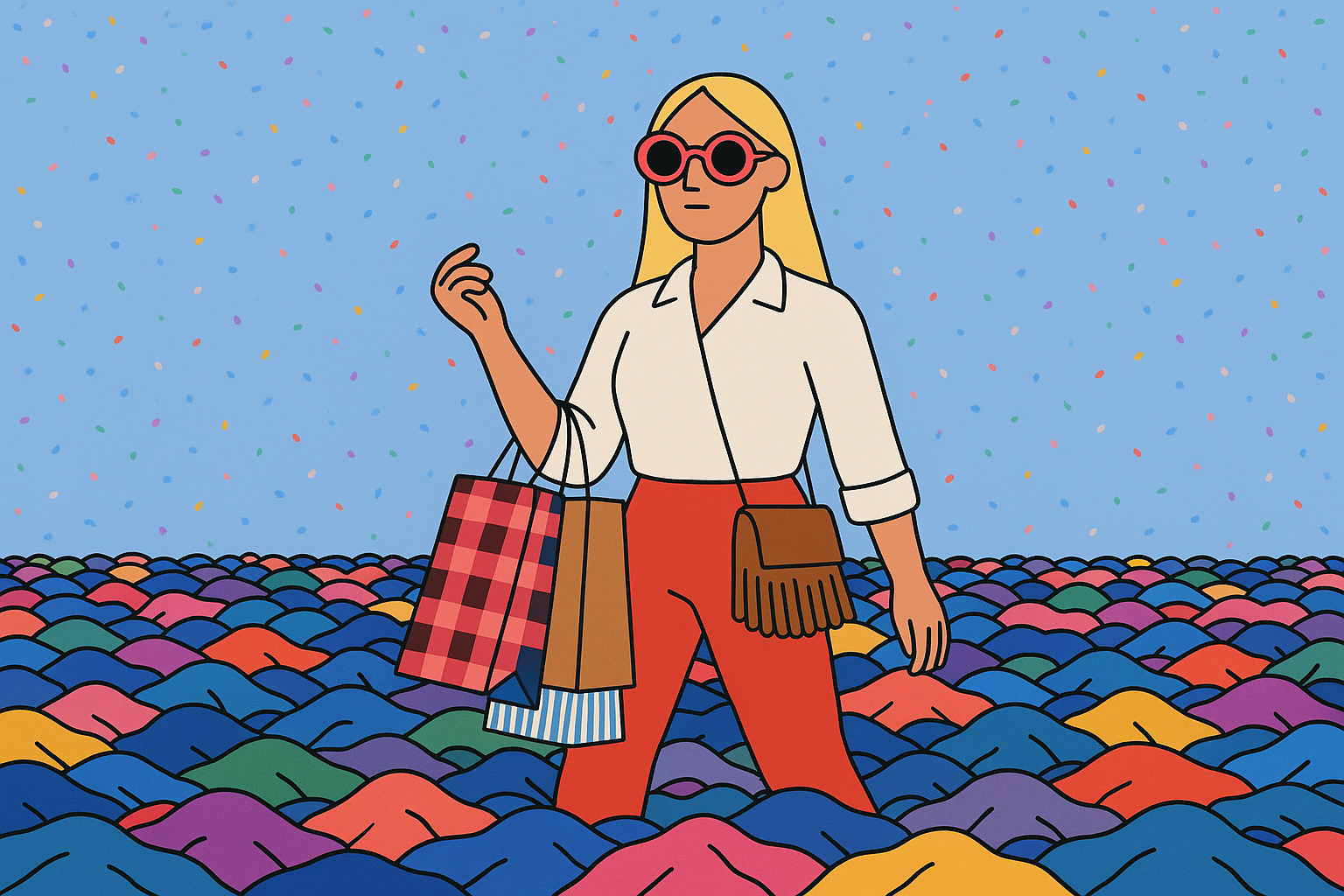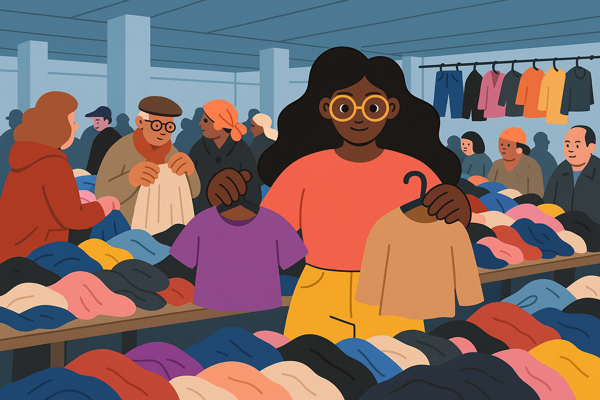What You Wear Shouldn’t Make You Sick
What you wear matters, more than you think. Around 70% of our clothing is made from plastic-based fibers like polyester, acrylic and nylon. These materials shed millions of tiny microfibers during wear, washing, and even drying. They end up in our air, oceans, and eventually: in our bodies. Scientists warn that this can seriously harm our health. In this article, we explain how fashion contributes to plastic pollution, what the health effects are, and what you (and we) can do to stop the flow.
What are microfibers and why are they so harmful?
Microfibers are tiny plastic particles smaller than 5 millimeters. A single garment can release up to 700,000 fibers per wash. They escape washing machine filters and water treatment plants, and end up in rivers, oceans (in the fish, salt, drinking water) and even the air we breathe.
These synthetic fibers are not biodegradable and remain in the environment for hundreds of years. They attract toxic chemicals and spread harmful bacteria and parasites. Recent studies found microplastics in testicles, placentas, breast milk, and even in the lungs of healthy people.
What does that mean for your health?
Microplastics can enter your body through food and air. Once inside, they can trigger inflammation, DNA damage, and hormonal disruptions. Children are especially vulnerable because they inhale up to three times more microplastics than adults. Inhaling nylon fibers may also hinder lung development, increasing risks of asthma and chronic disease.
At Plastic Soup Foundation, we published the report Do Clothes Make Us Sick? in 2022. It shows there is already enough scientific evidence to be seriously concerned. We don't need more research to take action. The time to act is now.
What is Plastic Soup Foundation doing?
We push for system change. Through science-based campaigns, we put pressure on policymakers to regulate microplastic fibers. We advocate for a legal ban on synthetic fibers without safety assessments and for mandatory filters in washing machines. Together with scientists, decision-makers and sustainable brands, we work on real solutions.
Support our work with a donation!
What can you do yourself?
Fortunately, you as a consumer can make a big difference. Our free Fashion Guide includes tips to reduce microfiber pollution, such as:
- How to avoid synthetic clothing and choose safer fabrics
- How to wash and dry your clothes more responsibly
- How to buy better quality, more sustainable clothes
- Why buying less and second-hand is best
- Scan your products for plastic with our free PlasticFreeFuture app
Why this needs to change now
The fashion industry is responsible for around 10% of global CO₂ emissions and a major source of microplastic pollution. Once plastic fibers enter the environment, they cannot be removed. The only real solution is cutting emissions and tackling the source. That means less fast fashion, stronger laws, and conscious consumer choices.
Fast facts about plastic fashion
- Roughly 70% of your clothing contains plastic fibers
- These fibers end up in your body via air and food
- Science shows: they can harm your health
- Plastic Soup Foundation is fighting for solutions, but we need your help: donate and support our mission
- Download the free Fashion Guide
- Download the PlasticFreeFuture app
Your clothing choices matter.
Help stop fast plastic fashion: not just for yourself, but for future generations.



.png)


